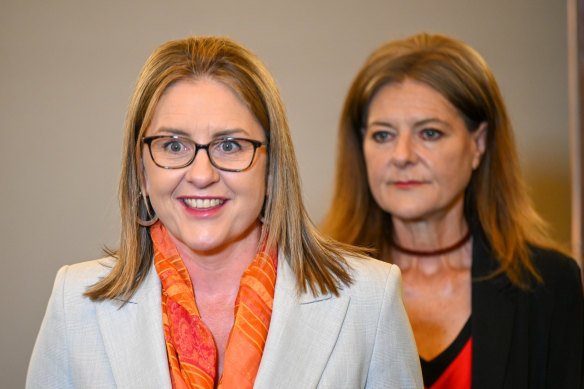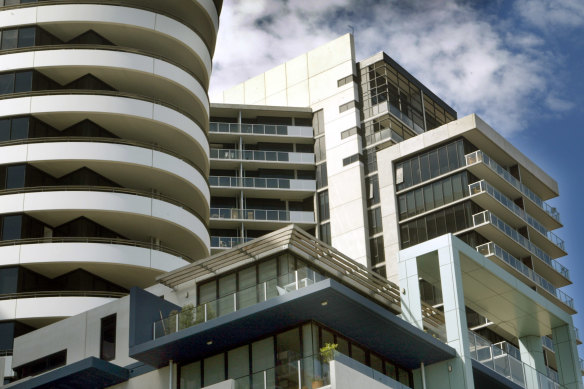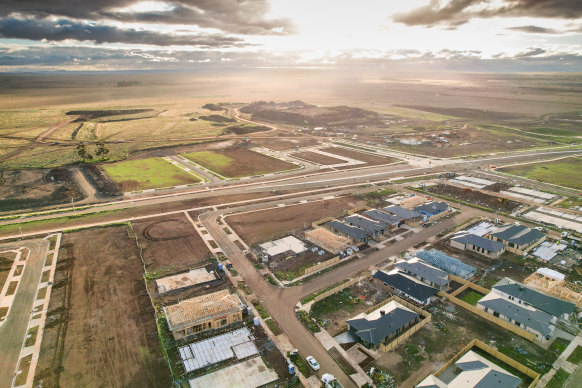- Exclusive
- Politics
- Victoria
- Housing crisis
This was published 1 year ago
Planning powers could be stripped from councils that miss housing targets
By Royce Millar, Kieran Rooney and Josh Gordon
Victorian councils that miss targets for new housing face being stripped of planning powers as the Allan government looks to dramatically increase the supply and affordability of homes.
Developers would also be hit with a new universal liveability charge across all postcodes, replacing a much-maligned “infrastructure contribution” charge that currently only applies to the metropolitan fringe.

Premier Jacinta Allan and Planning Minister Sonya Kilkenny are considering new proposals to reform Victoria’s housing industry.Credit: Eddie Jim
Under proposals being considered in the second stage of Labor’s push for more homes, housing targets would be written into local planning schemes and require council planners, councillors and Victorian Civil and Administrative Tribunal members to consider them when weighing up approving housing developments.
Sources within and close to the government said carrot and stick measures were being considered to pressure councils into approving more housing. They include the state seizing planning control over key precincts from councils that do not meet targets, and a bigger pot of infrastructure funding for those that do.
The sources, who spoke on the condition of anonymity as they are not authorised to speak publicly, have confirmed the government is considering replacing its “growth areas infrastructure contribution” charge – that currently applies only to development on the metropolitan fringe – with a new universal liveability charge across all suburbs and towns.
The development follows warnings that Victoria has little hope of delivering an average of 80,000 new homes every year for the next decade promised in last year’s landmark housing statement.
In 2023, the construction of just 53,711 houses, flats and townhouses had begun, the lowest annual total since 2013. The latest Housing Industry Association forecast is that in 2024, construction will start on as few as 52,332 new homes, and increase slightly to 55,175 in 2025.
According to the government’s own estimates, Victoria will need to build about 57,000 homes every year merely to keep pace with soaring population growth, with Melbourne expected to swell by about 1 million people over the next decade.
In the early 2000s, the Bracks Labor government introduced targets as part of its Melbourne 2030 plan to consolidate the city. However, with no implementation plan and no obligation on councils to achieve the targets, they were soon forgotten.
Twenty years later, amid a worsening housing crisis, the Allan government is determined to get more homes built in established suburbs, and to rein in sprawl.

Apartments in Docklands.Credit: Simon Schluter
It has recruited public service troubleshooter and former COVID-19 response commander Jeroen Weimar to lead the implementation of the housing statement Daniel Andrews announced in September as premier, and is working on a range of initiatives, including mandatory targets.
One source said the government wanted to learn from London and Sydney, where housing targets had been introduced for councils.
The planning department has also met with UK authority Transport For London to compare notes on strategies for higher density housing around train stations.
Victorian councils lost some planning authority last year when the government amended rules to allow developers to take larger projects directly to Planning Minister Sonya Kilkenny for approval.
However, the government did not go as far as many expected in reducing councils’ planning authority.
Senior Labor sources have confirmed that MPs were wary last year about picking a fight with councils and communities concerned about being overrun by high-density apartments.
The housing targets are being developed alongside a review of the Melbourne metropolitan planning strategy, Plan Melbourne, which is being broadened to oversee the whole state and will be rebranded as Plan Victoria.
Last week, Kilkenny, Treasurer Tim Pallas and Housing Minister Harriet Shing met with housing industry peak groups which signed up last year to the affordability partnership to deliver the government’s housing targets.

A new housing estate on Melbourne’s western fringe.Credit: Jason South
A day after the meeting, Kilkenny said the current infrastructure contribution scheme was not the most equitable or efficient system. “We’re certainly keen to hear from industry about what further improvements we could make to our infrastructure contributions system,” she said.
When asked if infrastructure contributions would be widened to include all of Melbourne, Kilkenny said the government was reviewing a related report from a ministerial advisory committee, appointed in 2020. The final report was never publicly released.
Kilkenny did not respond directly to questions for this story. Instead, she issued a brief statement: “The status quo is not an option – the best way to make housing more affordable is to build more homes and that’s why we’re pulling every lever we can to unlock more supply.”
But the peak council group Municipal Association of Victoria cautioned the government against “imposed” housing targets and instead backed “housing capacity forecasts” generated with councils.

Infrastructure Victoria chief executive Jonathan Spear.
Association president David Clark said that merely approving more development would not ensure homes were actually built, noting that tens of thousands of approved planning permits across Melbourne were not acted on because of economic factors such as increased labour and materials costs.
Infrastructure Victoria chief executive Jonathan Spear said housing targets for local government areas would provide greater clarity about where new homes should be built, particularly for moderate-income households forced to the fringes.
Spear called for targets to be combined with zoning changes to accommodate more homes, the streamlining of approvals for low-rise apartments and townhouses that met updated design standards, and infrastructure charges to apply to developments across Melbourne and not just the fringes.
He said reworking the charges would help give communities “the transport, open space, schools and amenity they need”.
Analysis by consultants SGS Economics and Planning, commissioned by Infrastructure Victoria, shows the state spends about $50,000 on local infrastructure for every new growth-area home.
But the current growth areas infrastructure contribution levy – a charge introduced by Labor in 2010 – claws back just $6100 per new dwelling, leaving taxpayers to foot the remaining 88 per cent of the bill.
The disparity has prompted calls from Infrastructure Victoria and others for a new universal collection system.
In December, The Age reported that the City of Wyndham, south-west of Melbourne, faced a funding gap of almost $534 million for 49 infrastructure projects it had earmarked for growth areas, partly driven by a shortfall in funding from infrastructure contributions.
Start the day with a summary of the day’s most important and interesting stories, analysis and insights. Sign up for our Morning Edition newsletter.